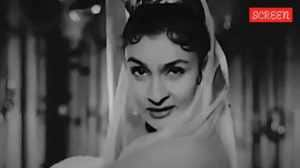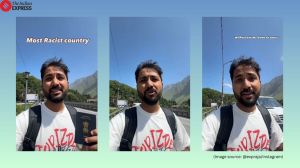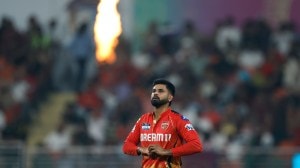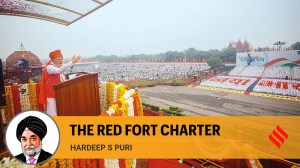‘We are working to ensure a commuter doesn’t spend over 10 minutes at a bus stop’
Brihanmumbai Electricity Supply and Transport Undertaking General Manager Lokesh Chandra speaks about his plans for augmenting the BEST bus fleet in Mumbai and steps to improve passenger comfort.
 Lokesh Chandra, GM, Brihanmumbai Electricity Supply and Transport. (Express Photo by Amit Chakravarty)
Lokesh Chandra, GM, Brihanmumbai Electricity Supply and Transport. (Express Photo by Amit Chakravarty) At the Town Hall hosted by The Indian Express, Brihanmumbai Electricity Supply and Transport Undertaking General Manager Lokesh Chandra speaks about his plans for augmenting the BEST bus fleet in Mumbai and steps to improve passenger comfort.
In next four years, BEST will complete a century of operations in Mumbai. For an entity that remained profitable and efficient for so long, what went wrong with BEST?
Operation-wise, public transport is never a profitable business world over and it’s a well-known fact. BEST operated on a unique model whereby we were also given the licence for electricity distribution. Till 2003, we were cross-subsiding our transport operations from our electricity business. In 2003, the new Electricity Act came into being, which stopped the use of profit that was generated from the power business to be used for non-electricity operations. That is when the financial problems started. At present, our transport wing is making a loss of around Rs 6 crore per day. While the stopping of cross-subsidy was a problem, we also faced issues as our ridership, which was 40-50 lakh per day, started dipping. Over the years, our carrying capacity has gone down and we have smaller buses now and then aging fleet also adds to maintenance cost. Manpower cost too has gone up and fuel prices have also increased exponentially.
What are the plans to augment the BEST fleet and improving passenger comfort?
We are looking at improving the city BEST bus transport system. So, when we look at the city bus operations, it has two components — one is the quality of service, the other is the reliability of service. As per global norms, there needs to be around 60 buses per lakh population for running an efficient urban transportation system. We presently have only 22 buses per lakh population. We have a fleet of 3,600 buses which we are now planning to increase to 10,000 by 2026. We are also going in for electric buses which will further reduce our operating expenses. As of today, we have 406 electric buses.
By next year we are planning to ensure that we increase the fleet size to 7,000, of which 50 per cent will be electric buses. We are also working towards improving the reliability of our services. We have recently launched our BEST Chalo app, which allows commuters to live-track these buses and also check if they are crowded or not. Of the total 35 lakh commuters who take BEST buses daily nearly 33 lakh travellers use this app.
Have the numerous infrastructure projects that are going on in the city and the large number of potholes also affecting your operations?
Potholes and infrastructure work definitely add to traffic congestion. We found out that our bus schedules are not being maintained due to these delays. Over the last few years the average kilometres that our buses covered daily have come down from 200 km to 160-170 km. That translates into a 15-20 per cent drop in our revenue.
Are you rationalising the routes that BEST buses operate on?
The maximum number of our users use BEST buses to travel a distance of 7 km. The trip length of 85 per cent of our commuters is 7 km on an average. Those who travel over 12 km is only 2-3 per cent of our total commuters. Earlier we were operating on routes which covered a distance of 50-60 km and these buses could make only two trips in an eight-hour schedule. We have now rationalised our routes. We were earlier operating on 590 routes and now we are operating on 490 routes, but at the same time with the same fleet we have improved our ridership.
People are getting better service and we have improved the frequency which on some routes used to be one bus per hour. It has now come down to 20 minutes. From next year onwards we are hopeful that the maximum amount of time that a commuter would have to face at a bus stop in the city would not be more than 10 minutes.
What are your plans for the iconic double-decker buses in Mumbai?
In Mumbai we earlier used to have 1,000 double-decker buses with a ridership of 40-45 lakh per day. Over a period of time the number of double-decker buses has come down to 40-45 and we have a ridership of 35 lakh. It is important that we increase the capacity of buses and we are now planning to augment the double-decker fleet. However, all the 900 double-decker buses that we will introduce will be electric buses.







